Living Green With Pets: Leave the Lilies Outside
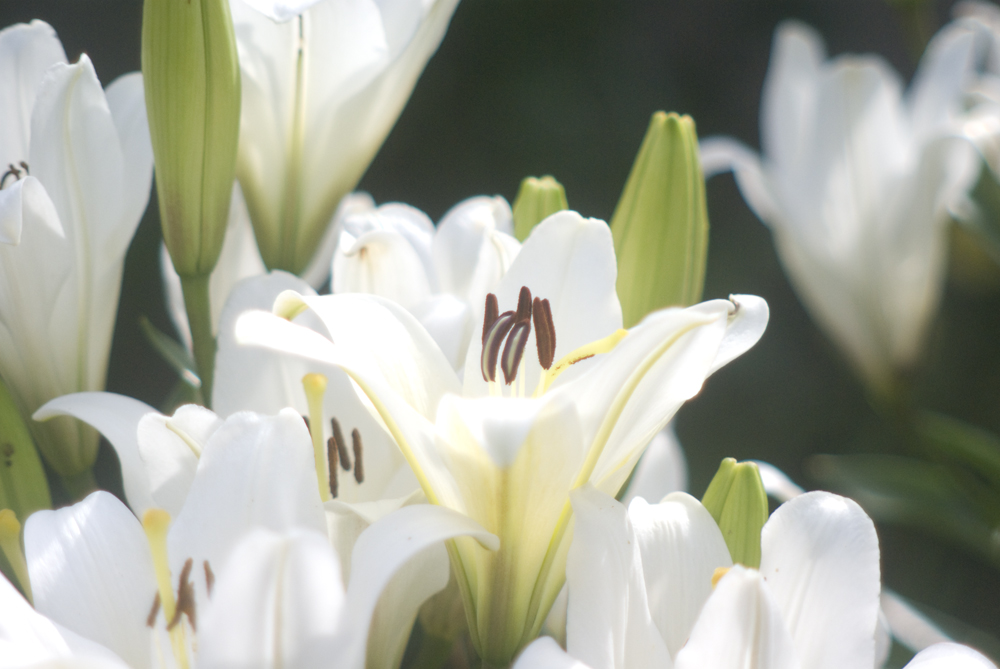
For kitty’s sake, this Easter plant that Easter lily outside!
And plan ahead for what flowers you may give as gifts or bring into your own home. Many of the flowers symbolic of this holiday or used for decoration this time of year including flowers from spring-blooming bulbs such as daffodils, paperwhite narcissus, crocus, tulips and hyacinths, including when these plants are found in bouquets.
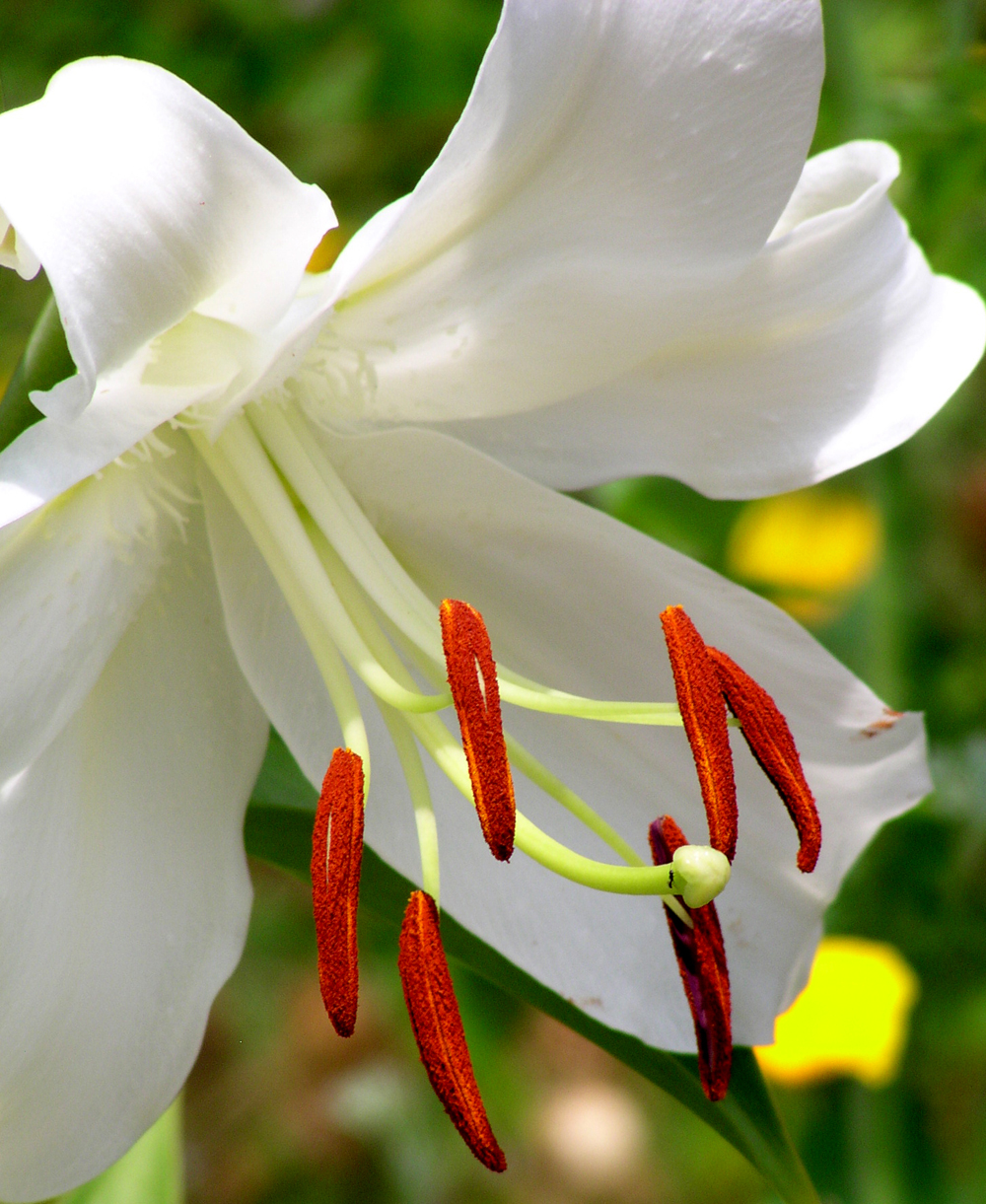
But especially that big white “Easter lily”, often carried home from church on Easter Sunday or given as a gift, is often deadly to cats. All species of lily are toxic as well, including Asiatic lily, daylily, tiger lily and even smaller lilies like alstromeria.
All parts of the lily are toxic too—flowers, leaves, stems, bulb, even the pollen from the stamens, so prominent in those Easter lilies. Look at the stamens in the photo of the lily at left—what self-respecting kitty wouldn’t go in for a thorough inspection of those?
My cats will eat anything green I bring into the house, whether it’s cut flowers or a house plant. Most cats aren’t terribly particular about what greens they’ll nibble on; generally they’ll try anything green and fresh, and some cats will completely chew down a plant that can’t have tasted very good and wasn’t very easy to chew. They don’t stop with leaves, either, but will eat the petals off of a flower, the stems, it’s all a potential snack.
And while many pet owners know the dangers of various houseplants, most people don’t associate cut flowers with these dangers, yet many cut bouquets include flowers from some of the most toxic plants for cats and dogs. What makes it complicated is that we recognize them when they are individual growing plants, but may not even notice them in a mixed bouquet.
Some plants cause gastric upset which can be a mess to clean up and is uncomfortable for your cat, but it can also have long-lasting effects such as ulcers in the mouth or digestive tract, and excessive vomiting or diarrhea can dehydrate and even kill a very young or old cat.
Other plants more seriously affect a cat’s organs and can be deadly within hours, even to a healthy cat.
Lilies in all their forms
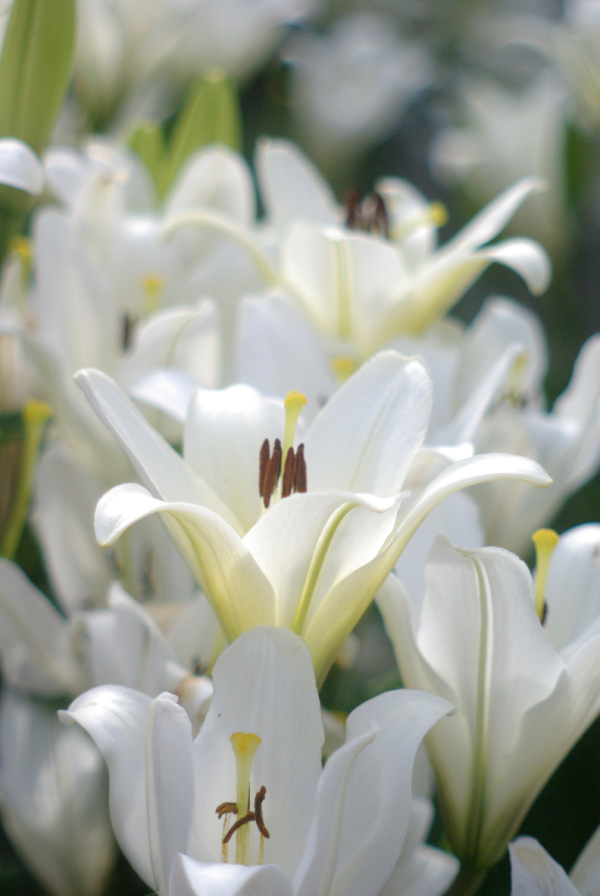
Lilies in just about all their species can cause kidney damage in cats which is permanent and can lead to kidney failure within 48 hours if left untreated.

Sure, we know the big white lilies at Easter, but consider an everyday small grocery story bouquet: a few yellow mums, some white daisies, pink carnations, fern, baby’s breath and—alstromeria, a South American lily, which comes in colors from white to scarlet.
Or a medium-sized get-well bouquet: Yellow roses, white mums, blue larkspur and—two big pink Stargazer lilies.
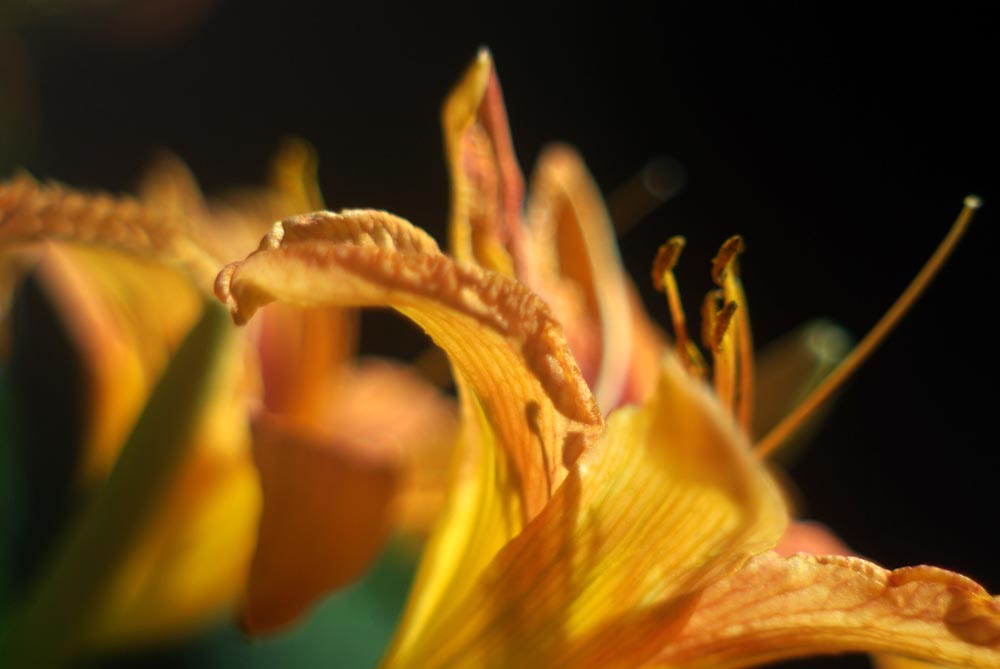
And what used to be part of my favorite backyard bouquets in spring: pink climbing rose, red rambler rose, Shasta daisies, blue widow’s tears and—big orange daylilies, as well as any of the other domestic or hybrid lilies that you may grow in your back yard.
Bulb-forming plants
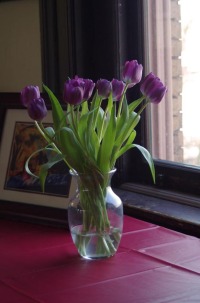
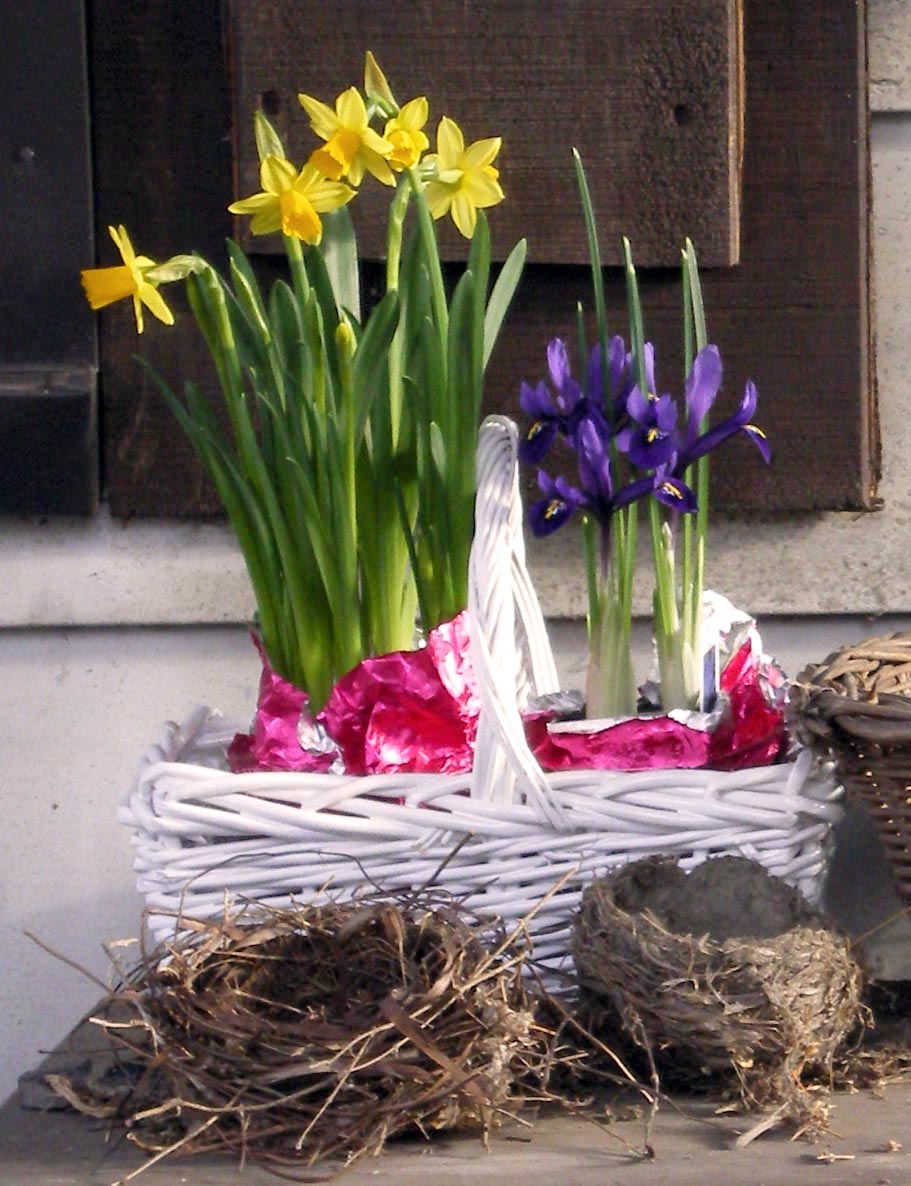
Instead of a bouquet of cut flowers we’ll often give or receive bulbs forced to bloom early in baskets and pots. I used to welcome the new year and the last long days of winter with forced bulbs all over my house as pots of paperwhite narcissus, trays of daffodils and baskets of mixed fragrant tulips, hyacinth and crocus along with squills and starflowers.
Then I learned that any part of these plants can not only cause gastric upset but also organ damage, specifically kidney damage and heart failure. I remembered a healthy fifteen-year-old cat I’d lost years before to acute kidney failure—her kidneys just failed one day and I had to put her to sleep the next. This can happen without an outside stimulus, but I’ll always wonder if that was the cause and I have never forced bulbs in any place my cats could get them since then.
In the same way, onion and garlic, also bulb-forming plants though they are considered food, are toxic to cats.
What to do
Don’t presume you’ll outwit your cat. Try the following:
- Don’t try to put them in an out-of-the-way or high place in your house! Cats can jump several feet straight up and are agile climbers, especially when they have the incentive of that vase of flowers on top of your entertainment center where they’ve never gone before. They may injure themselves in the attempt, break a ceramic or glass vase creating a hazard for the whole house, or may actually succeed in getting to the plant and eating it despite your attempts to keep it away from them.
- Look over the bouquet and remove anything that is potentially toxic. Instead of tossing them, take them to the nearest nursing home, personal care home or other public place that might appreciate cut flowers on display—as long as there isn’t a kitty there.
- Likewise, take live plants that are toxic to your cats to your nearest care facility, again making certain there isn’t a resident kitty.
- If it’s warm enough, put cut flowers in a vase on your front porch.
- Plant live plants, such as lilies, tulips and other forced bulbs, hydrangea and azalea, or display them in their pots on your porch or in your yard instead of bringing them indoors. Many plants in pots have spent some time outdoors in a nursery display at a garden center and will adapt just fine.
Keep toxic plant and flower information handy
Your local veterinarians and shelters often have lists of toxic flora has handouts, and plenty of resources exist on the internet.
And as far as those flowers, you just can’t go wrong with roses!
ASPCA Searchable Database of Plants
Browse some rescued cats and kittens!
All images used on this site are copyrighted to Bernadette E. Kazmarski unless otherwise noted and may not be used without my written permission. Please ask if you are interested in using one in a print or internet publication. If you are interested in purchasing a print of this image or a product including this image, check my Etsy shop or Fine Art America profile to see if I have it available already. If you don’t find it there, visit Ordering Custom Artwork for more information on a custom greeting card, print or other item.
Gifts Featuring Cats You Know
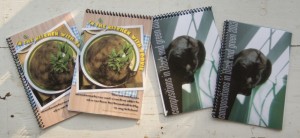


Pingback: Living Green With Pets: Bringing Plants Indoors ~ The Creative Cat
Pingback: Jelly Beans and Easter Grass and Chocolate and Leave the Lilies Outside! ~ The Creative Cat
Pingback: The Creative Cat - A Few Holiday Considerations
Pingback: The Creative Cat - Living Green With Pets: Bringing Plants Indoors
Pingback: The Creative Cat - A Few More Holiday Considerations
Terrific and very informative post. You must protect your cat and be aware of how toxic lilies are to them
Thanks so much, Dr. Rayya! We’re all so accustomed to seeing these things at holidays it’s hard to break the habit, but worth it to think about.
Thanks for this very good info. I get cut flowers from the supermarket every week and they often have alstromeria. And my kitties can’t help themselves from feasting on these bouquets. From now on I will make sure I don’t buy any with this flower or any of the others you mentioned. Thanks, Janet
Janet, that’s exactly one of the reasons I focused on cut bouquets as well. It’s hard to avoid alstromeria because it’s a great addition in color and texture. thanks for visiting!
Such vital information for all cat owners and the cats will, of course, want to play, nibble and eat on any of these plants that land up inside.
Susan, I long thought I could outwit them, and realized how much time I was spending on that…